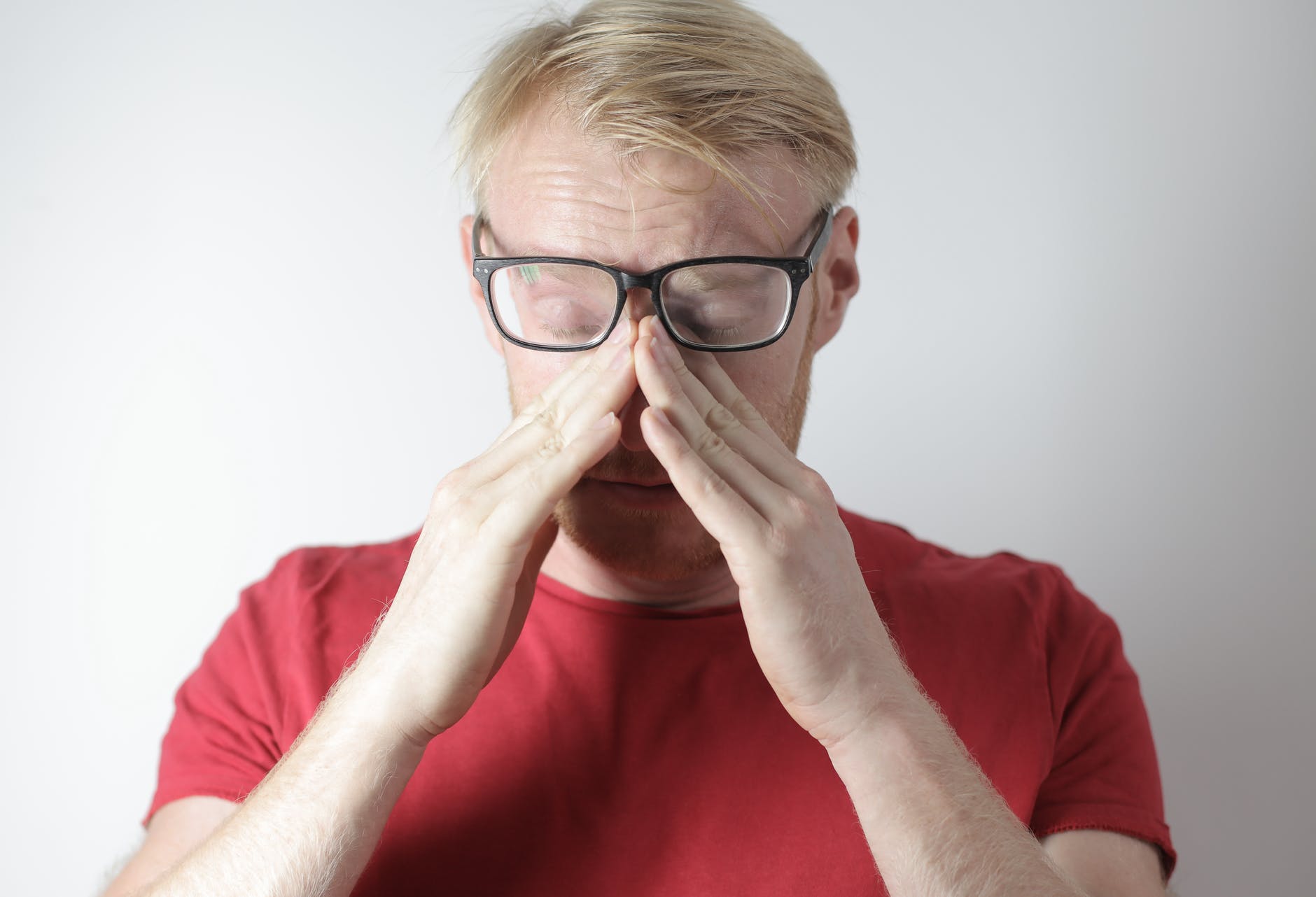Depression is a mental health condition that affects millions of Americans each year. In 2015, the National Institute of Mental Health (NIH) estimated that 16.1 million adults (ages 18 and up) experiencing at least one major depressive episode in that year alone (NIH, 2017). One of the commonalities for those suffering from depression is reports of physical illnesses or pain. While it is true that some cases of depression stem from an individual having a physical illness, and developing depression due to their illness, there are vast numbers of cases that include physical illness that didn’t manifest until after a depressive episode (Goodwin, 2006). It is through these reports that a strong link between physical and mental health can be drawn. While depression may not be the sole reason that someone develops physical illnesses, research shows that there is a direct connection between biology and a person’s mental health.

The Common Cold Of Psychiatry
Depression is often described as being “‘the common cold’ of psychiatry”, affecting individuals in both mild and severe forms (Goodwin, 2006). The links between the physical body and depressive episodes are often lost, but it needs to be understood that “all severe depression is in some sense biological” (Goodwin, 2006). When patients present to their doctors, the symptoms of “major depression… minor depression dysthymia, and depressive symptoms merge with other manifestations of human distress”, most notably physical illness or ailments (Goodwin, 2006).
Another point that must be addressed is the differences between men and women who are diagnosed with depression. According to NIH (2017), women are twice as likely to suffer a depressive episode as men. It is difficult, however, to conclusively say that women suffer from depression more than men, since men are less likely to report symptoms. Women are noted as being more comfortable discussing emotional issues with their primary physicians over men, which could explain why fewer men are reported to have depressive episodes (WHO, 2017).
Findings by Harvard Health Findings (2009) found interesting results when looking at the link between pain and depression: “According to some estimates, more than 50% of depressed patients who visit general practitioners complain only of physical symptoms, and in most cases the symptoms include pain. Some studies suggest that if physicians tested all pain patients for depression, they might discover 60% of currently undetected depression” (Harvard Health Findings, 2009). Since the full scope of depression in the global population is uncertain, it cannot be said with certainty that women are more likely to suffer depressive episodes than men.
Additionally, when it comes to physical symptoms, women are more likely to “generally report more bodily distress and more numerous, more intense, and more frequent somatic symptoms than men” (Barsky, Peekna, and Borus, 2001). At the same time, the study by Barsky et al (2001) notes that men and women have different experiences when it comes to “somatic symptoms, bodily distress, and physical health”. The interpretations of current research, however, “is difficult because studies vary in the methods used to elicit and measure symptoms” (Barsky et al, 2001). It is because of this that physical illness resulting from depression cannot be measured as being higher in men than it is in women. While more women are found to have depressive episodes, and, for example, be at higher risk for cardiovascular disease, direct ties between specific illnesses and depression cannot be verified (WHO, 2017). There are many risk factors for illnesses, and while stress (or depression) are risk factors for cardiovascular disease, there is no way to conclusively know what sole specific factor brought on the development of the disease (WHO, 2017).
Identifying Risk Factors
Because of the issues with identifying risk factors, it cannot be said with certainty that depression leads to the development of specific illnesses or physical ailments. However, there is conclusive evidence that show those with depression have higher rates of physical symptoms. For those suffering from depression, physical symptoms often manifest in the form of “chronic joint pain, limb pain, back pain, gastrointestinal problems, tiredness, sleep disturbances, psychomotor activity changes, and appetite changes” (Trivedi, 2004). While most studies tend to try and identify which came first, the physical manifestations or the depression, Trivedi (2004) points out that “physical pain and depression have a deeper biological connection than simple cause and effect”. In patients suffering from a depressive episode, “many physicians consider patients to be in remission when their acute emotional symptoms have abated, but residual symptoms—including physical symptoms—are very common and increase the likelihood of relapse” (Trivedi, 2004).
For a patient to achieve a full remission, both the emotional symptoms and the residual symptoms need to be measured. “There are a number of short yet accurate measurement tools (rating scales) available that effectively measure the remission of physical symptoms as well as emotional symptoms” (Trivedi, 2004). Given the links between depression and physical symptoms, as well as the increased likelihood of relapse due to not handling the residual symptoms as part of the depressive episode, it is in the patient’s best interest to perform simple tests to ensure they succeed at making a full remission, rather than to risk relapse by not making the connection between the mental and the physical links.
The Biological Link Between Depression And Physical Pain
There is something to be said about the biological link between depression and physical pain, in the way that they are both treated. “Pain, especially chronic pain, is an emotional condition as well as a physical sensation. It is a complex experience that affects thought, mood, and behavior and can lead to isolation, immobility and drug dependence” (Harvard Health Publications, 2009). When looked at from that perspective, it is easy to see that depression is similar to physical pain. “Pain is depressing, and depression causes and intensifies pain. People with chronic pain have three times the average risk of developing psychiatric symptoms—usually mood or anxiety disorders—and depressed patients have three times the average risk of developing chronic pain” (Harvard Health Publications, 2009).
Anti-depressants and pain medication also act in the same way, furthering the idea of a biological link. Both “act in brain pathways that regulate mood and the perception of pain” (Harvard Health Publications, 2009). If there wasn’t a biological link between the two, the brain pathways targeted for treatment would likely not be the same in both pain and depression. When a person has both depression and pain, the recovery from both is a lot more difficult. “Pain slows recovery from depression, and depression makes pain more difficult to treat; for example, it may cause patients to drop out of rehabilitation programs. Worse, both pain and depression tend to feed on themselves” (Harvard Business Publications, 2009).
This is something that must be considered for patients with both pain and depression. Given the estimation that such a high percentage of depression patients go undiagnosed, it would be useful for health care providers to test for physical and mental health problems at the same time. This would increase a person’s chance at a full remission after treatment, as well as let the health care provider know if there are more issues that have to be addressed than just the physical or mental state. Pain and depression both “change brain function and behavior. Depression leads to isolation and isolation leads to further depression; pain causes fear of movement, and immobility causes the conditions of further pain” (Harvard Business Publications, 2009). Depression and pain act the same way, and “when depression is treated, pain often fades away, and when the pain goes away, so does much of the suffering that causes depression” (Harvard Health Publications, 2009). When considering this, along with the research by Trivedi (2004), it is clear that just because a patient is no longer experiencing pain or depression after the other has been treated, doesn’t mean that it is gone completely.
For psychologists, the focus will still always be the patient’s mental health. At the same time, testing for physical pain or illness would be a smart move. The overall health and well being of the patient is the goal, not just the solving of a single problem. With mental health and physical pain or illness being so tied together, it would be wrong to only treat one problem when many more could be being overlooked, which would cause a relapse back into depression in the future. Primary care physicians should also be aware of the links, taking the time to look for depression rather than just treat physical pain or illness. By working together, psychologists and primary care providers can treat the whole patient, not just the part that seems to be broken from their diagnostic perspective.

While there is still a lot of research to be done, a direct biological link between pain and depression is being discovered. As with any illness or disease, it is impossible to conclusively say which factors caused specific illnesses. It is also impossible to say which comes first, the depression or the pain. Instead of trying to find what to blame for either mental or physical illness, health care providers need to look at the links between mental and physical health as being impossible to separate. One will always affect the other, even in minor ways. To ignore this is to leave problems undiagnosed, which only results in the problem coming back again for the patient in the future. The links between the mind and the body are fascinating, and we still haven’t begun to understand how deep the connection goes. We have to keep asking questions and comparing bodies of research so that we can begin to form the bigger picture in its entirety.
References
Barsky, A.J., Peekna, H.M., Borus, J.F. (2001). Somatic symptom reporting in men and women. Journal of General Internal Medicine, April 2001; 16(4): 266-275.
Goodwin, G.M. (2006). Depression and associated physical diseases and symptoms. Dialogues in Clinical Neuroscience. June 2006; 8(2):259-265.
Harvard Health Publications (2009). Depression and pain. Harvard Medical School, June, 2009. Retrieved March 15, 2017 from http://www.health.harvard.edu/mind-and-mood/depression_and_pain
NIH (2017a). Major depression among adults. National Institute of Mental Health, 2017. Retrieved March 15, 2017 from https://www.nimh.nih.gov/health/statistics/prevalence/major-depression-among-adults.shtml
NIH (2017b). Who is at risk for heart disease? National Heart, Lung and Blood Institute, 2017. Retrieved March 15, 2017 from https://www.nhlbi.nih.gov/health/health-topics/topics/hdw/atrisk
Trivedi, M.H. (2004). The link between depression and physical symptoms. Primary Care Companion to the Journal of Clinical Psychiatry. 2004; 6(suppl 1): 12-16.
WHO (2017). Gender and women’s health. World Health Organization, 2017. Retrieved March 15, 2017 from http://www.who.int/mental_health/prevention/genderwomen/en/







2 replies on “Depression and its Links to Physical Pain & Illness Essay Example”
Pretty component to content. I just stumbled upon your weblog and in accession capital to assert that I acquire in fact enjoyed account your weblog posts. Any way I will be subscribing for your augment and even I success you get entry to consistently rapidly.|
Thanks for the comment.